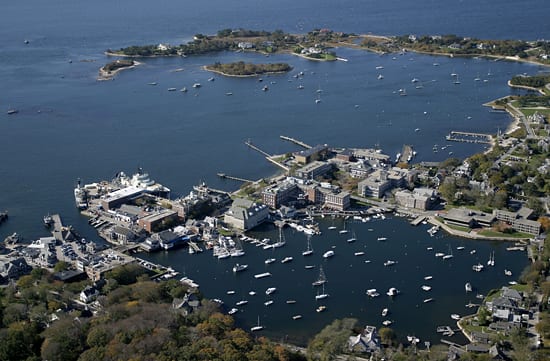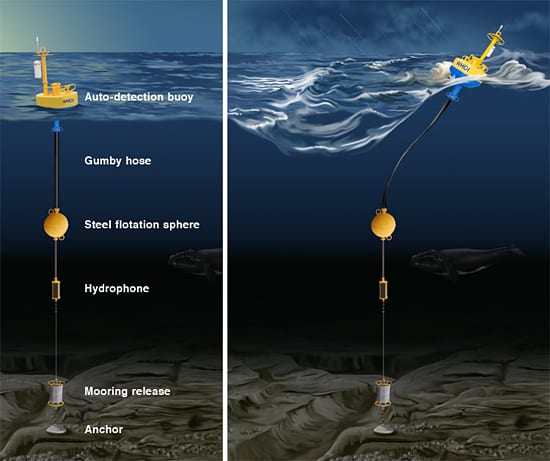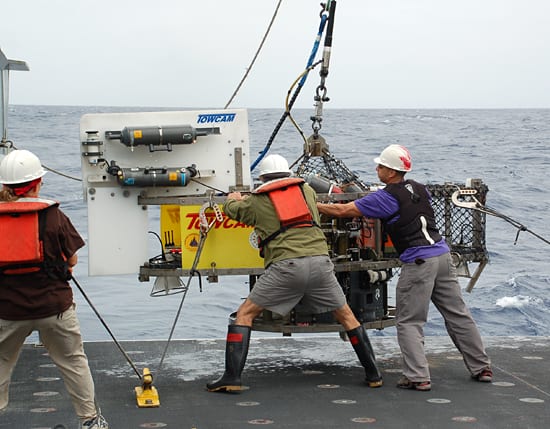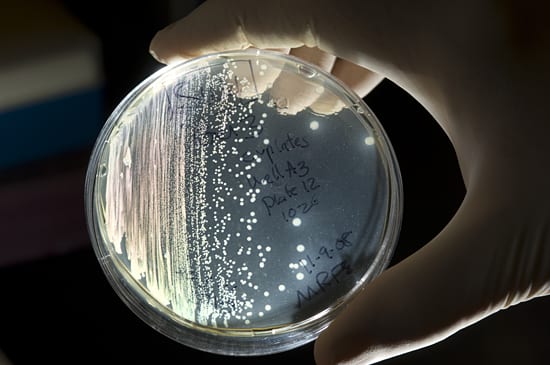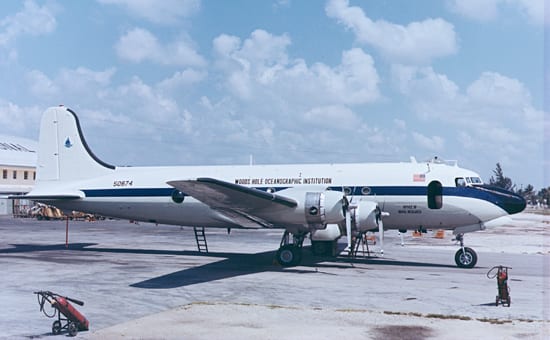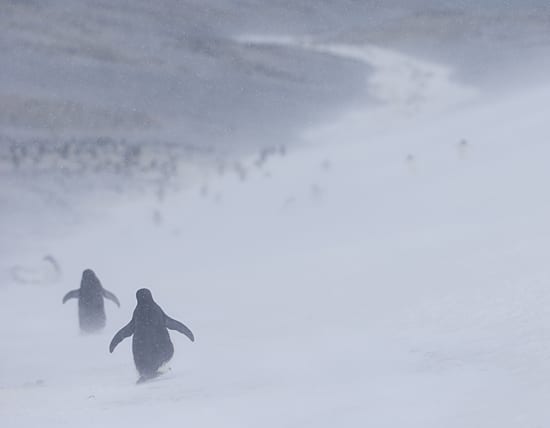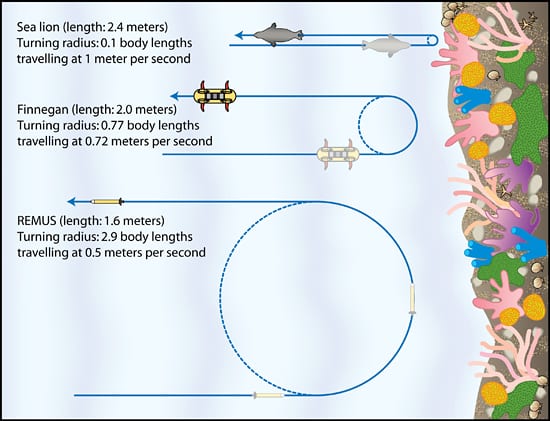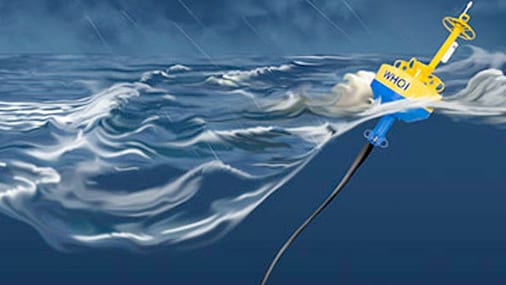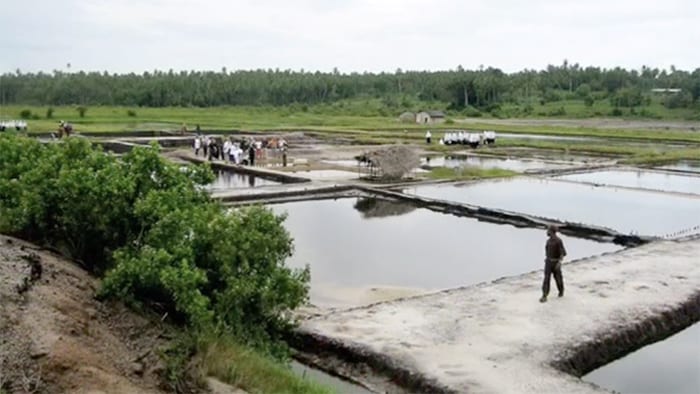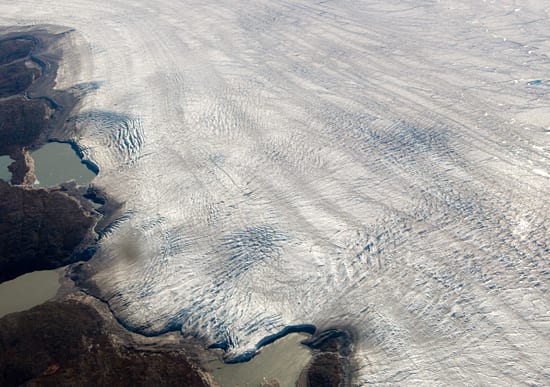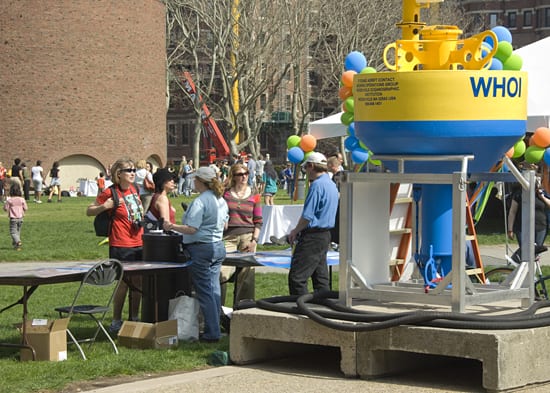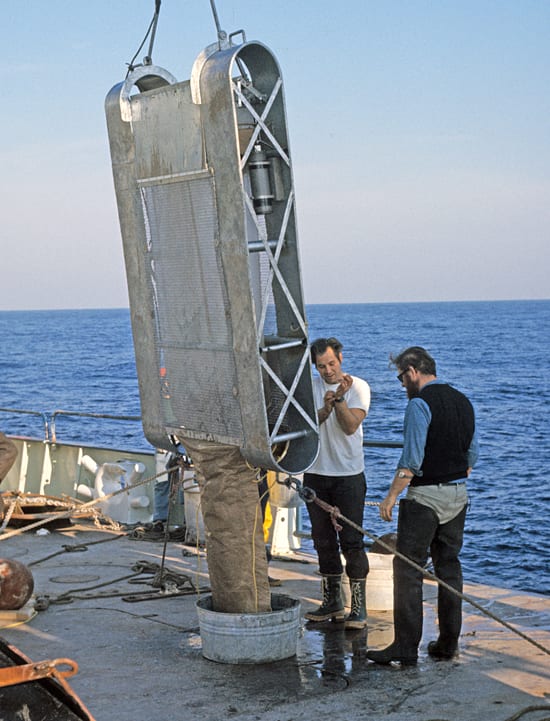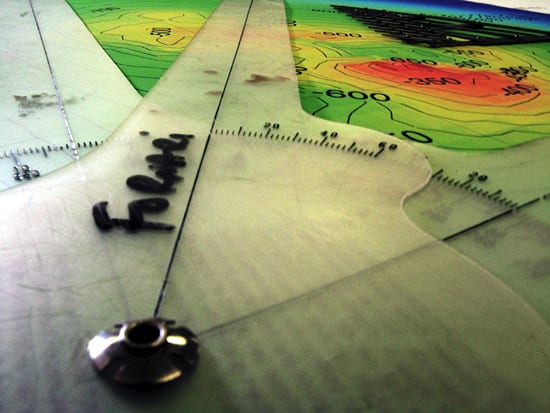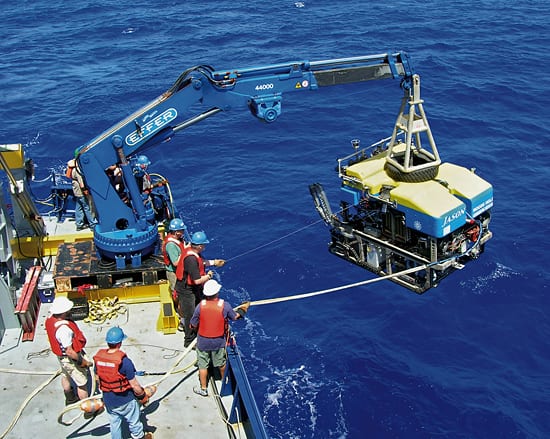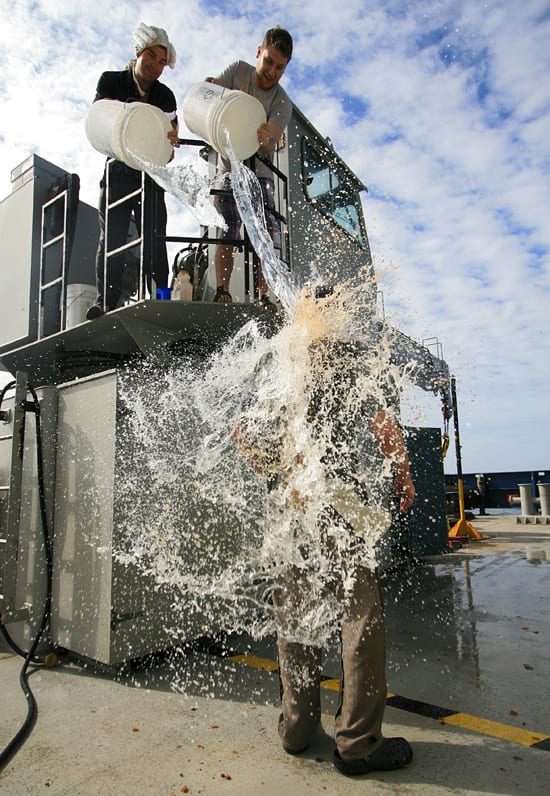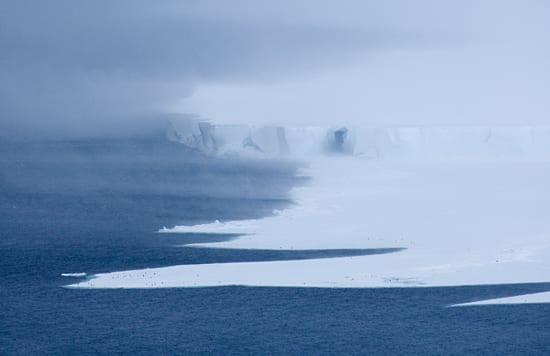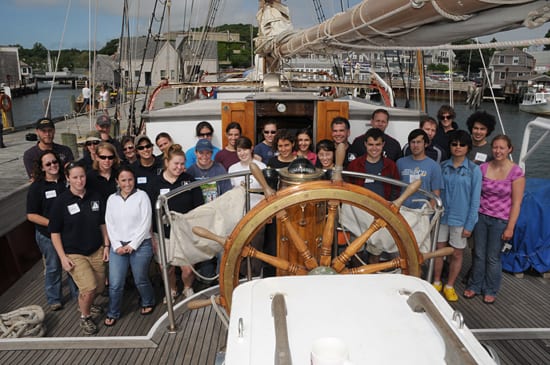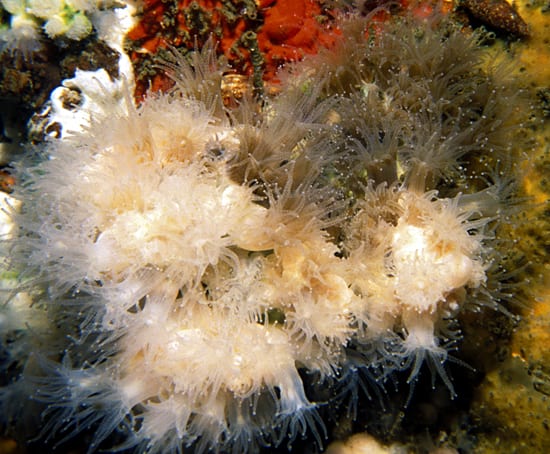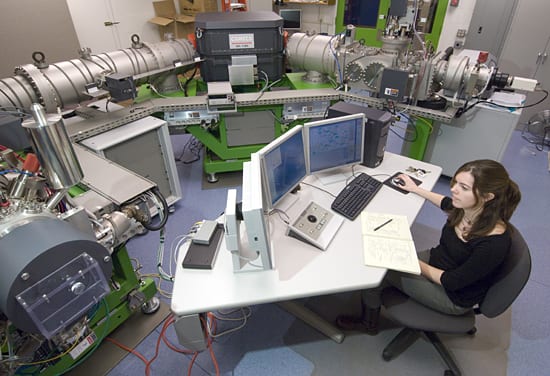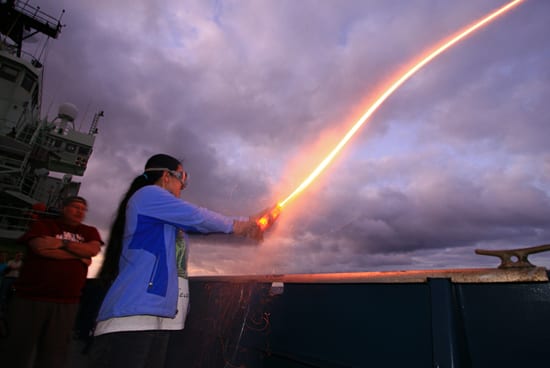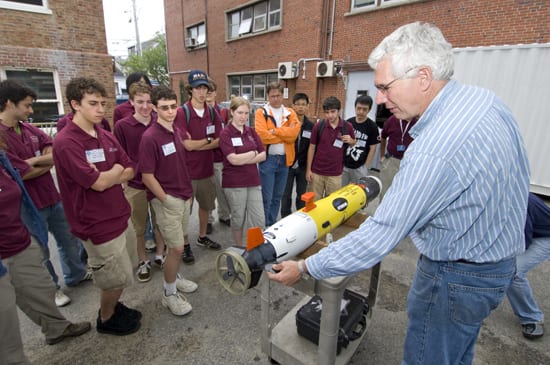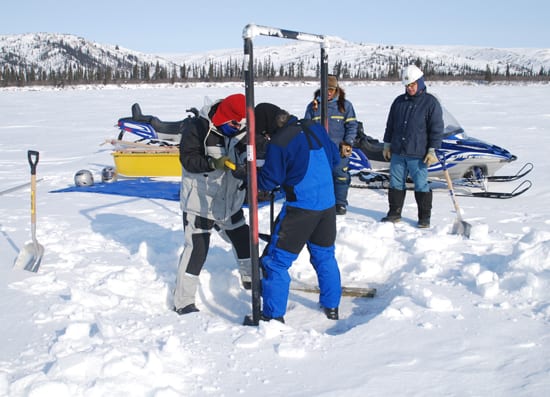Multimedia Items
Woods Hole Consortium
Boats fill Eel Pond in the village of Woods Hole —home to several world-renowned research organizations, including the Marine Biological Laboratory, Woods Hole Oceanographic Institution and Woods Hole Research Center. In…
Read MoreSilent buoy
Hydrophones on mooring lines could detect whale sounds but frequently it is too noisy. The problem was that in often violent seas, surface buoys moved up and down, pulling the…
Read MoreSteady as she goes
On board the R/V Thomas Thompson cruise TN230 on the Kermadec Arc north of New Zealand, marine geologist Dan Fornari (in boots) steadies the imaging and sampling vehicle TowCam during…
Read MoreFragile collection
Scientists of the “Inner Space Speciation Project”—a four-week expedition led by WHOI biologist Larry Madin to look for new species in Southeast Asia’s Celebes Sea—used a wide range of methods…
Read MoreMicrobial Trojan Horses
Aquatic environments pose challenges for disease-causing bacteria that are adapted to live in humans and other animals. One of those is being eaten by protists, single-celled organisms that are the…
Read MoreThe airplane that studied the ocean
Airplanes don’t typically come to mind when people think of ocean science. But for 25 years, beginning in 1945, WHOI maintained five planes for research. Read more about this former…
Read MoreAntarctica: the coldest place on Earth
The main reason why Antarctica is colder than the Arctic is that Antarctica is a continent surrounded by an ocean. The Arctic is an ocean almost completely surrounded by continents…
Read MoreFlapping Finnegan
Turtles, dolphins, and seals are masters at maneuvering in the water. So it’s no surprise that Stephen Licht, then a graduate student in the MIT/WHOI Joint Program, looked to them…
Read MoreBuoys Help Avert Whale-Ship Collisions
By Lonny Lippsett :: Originally published online July 22, 2009
Read MoreFarming Shellfish in Zanzibar
By Ari Daniel, Lonny Lippsett, Matt Villano :: Originally published online July 31, 2009
Read MoreFrozen white molasses
From the air, Greenland’s ice sheet looked like white molasses oozing down the mountainside and into the sea. Researchers are investigating Greenland’s glacial lakes, which form atop the ice sheet…
Read MoreCelebrating Science
Woods Hole Oceanographic Institution’s Ocean Science Exhibit Center Manager Kathy Patterson and Senior Engineer Don Peters (in baseball caps at center and far right) explain the new Auto Detection Mooring…
Read MoreSledding for sediments
George Hampson, left, and Steve Page carefully extract collected sediment from the deep-sea epibenthic sled. The sled, developed in the mid-1960s, was towed horizontally to collect the uppermost part of…
Read MoreVolcano mapping
A one-armed protractor, used for laying out ship tracks, rests on top of a map of the ‘Rumble III’ volcano, located in the Kermadec arc, north northeast of New Zealand. In…
Read MoreJason and the volcano
The remotely operated vehicle Jason is lowered in the Pacific Ocean in 2006 to explore an erupting underwater volcano near the Marianas Islands. Sensors left near the site indicated that…
Read MoreCeremony at sea
A pollywog is a person that has not crossed the equator on a ship. Here a pollywog endures a shower of icewater during equator crossing ceremony on the Research Vessel…
Read MoreThe frozen continent
In Antarctica, fierce winds blow plumes of snow out to sea and erase most of the 400 mile long Ross Ice Shelf from view. As global climate warms, polar researchers…
Read MoreBonding at sea
New graduate students in the MIT/WHOI Joint Program gather alongside ship’s crew on the deck of the Corwith Cramer for the annual Sea Education Association (SEA) Jake Peirson Summer Cruise. They…
Read MoreCoral clues to climate change
The Northern Star Coral, or Astrangia poculata, seen here with polyps extended, is a unique cold water coral that occurs in Woods Hole, MA, with (brown) and without (white) symbiotic…
Read MoreRock (and fossils) of Ages
Assistant scientist Alison Shaw at work using the ion microprobe, part of the Northeast National Ion Microprobe Facility (NENIMF) at WHOI. The facility is one of the National Ion Microprobe…
Read More‘Jedi’ at sea
R/V Atlantis third mate Rick Bean oversees the firing of expired flares by researcher Wenlu Zhu, of the Geology & Geophysics department, during Atlantis’ 2009 New Years Eve commemorations. The…
Read MoreRobot show and tell
Ben Allen (right), of the Applied Ocean Physics & Engineering department, shows a group of students one of the REMUS (Remote Environmental Monitoring Units) vehicles, which are designed for coastal…
Read MoreDigging down to look back
In April 2007, WHOI chemist Tim Eglinton (red cap) and research associate Daniel Montluçon worked to extract a sediment core from the bottom of a frozen lake in the Mackenzie…
Read MoreNo waves, just ripples
Clouds ripple in the skies above the research vessel Atlantis during its spring 2009 cruise to the Galapagos islands. (Photo by Lance Wills, Woods Hole Oceanographic Institution)
Read More
